If you want to work out your chest effectively, the cable fly is a great exercise. It can be adjusted in different ways to target specific muscles. This machine exercise has many variations that focus on different parts of your chest
These cable fly variations offer a nuanced approach to chest training, allowing for targeted engagement of different parts of the chest muscles. For instance, the high cable fly emphasizes the upper chest, while the low cable fly zeroes in on the lower section.
Furthermore, performing the exercise at a decline effectively targets the lower chest, while an incline position shifts the focus to the upper chest. This diverse array of cable fly variations provides a comprehensive means of sculpting and strengthening the entire chest region.
Also Read: Blast your Chest with Cable fly | Proper form, technique, benefits and variations
What is Cable Fly
The cable fly is a type of compound chest exercise that targets the chest muscles, triceps, and deltoids. It involves pulling the hands toward each other in wide arcs in front of the body, creating tension and engaging the pectoral muscles. This exercise is often performed using a cable machine, allowing for a smooth and controlled range of motion to effectively challenge the targeted muscle groups.
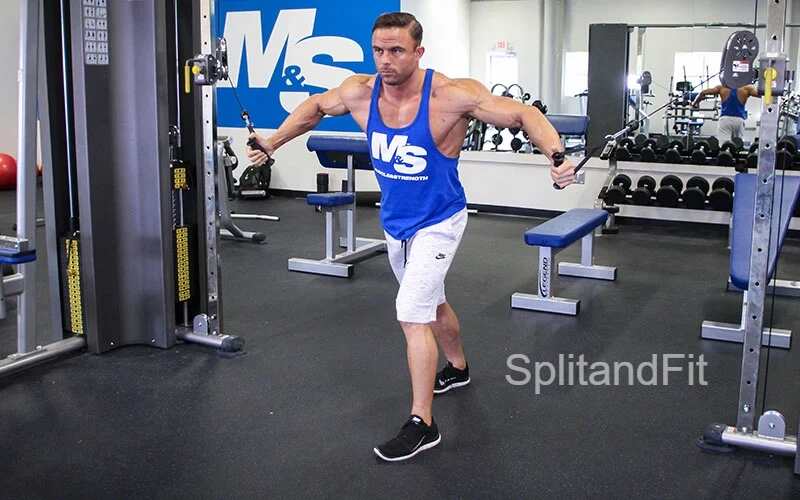
Muscles Targeted by Cable Fly
The cable fly exercise primarily targets the following muscles:
- Pectoralis Major: The cable fly particularly engages the pectoralis major, the large chest muscle responsible for shoulder flexion, adduction, and medial rotation of the humerus. This exercise effectively stretches and contracts the pecs, contributing to their strength and development.
- Pectoralis Minor: While not as prominent as the pectoralis major, the pectoralis minor also plays a role in the cable fly exercise by aiding in stabilizing and depressing the scapula, thus contributing to overall chest stability and support.
- Front Deltoids (Anterior Deltoids): The front deltoids are involved secondarily during cable fly exercises. They assist in the movement by helping to stabilize and control the motion of the arms, contributing to shoulder flexion and horizontal shoulder adduction.
- Triceps: Although not the primary focus, the triceps are engaged to stabilize and control the movement during cable fly exercises. Their involvement aids in elbow extension and contributes to overall upper-body stability.
The cable fly exercise effectively targets these muscles through controlled, sweeping arm movements that mimic the motion of hugging a tree, leading to the comprehensive development of the chest, shoulders, and triceps.
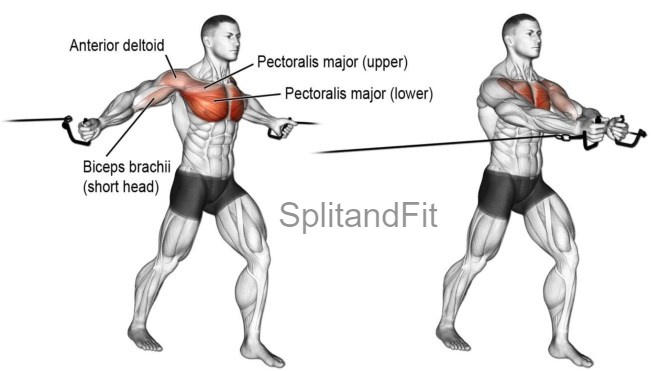
Importance of Different Cable Fly Variations
The importance of cable fly exercises lies in their ability to effectively develop the chest muscles while offering a range of variations to target specific areas. These variations, such as low to mid cable flys, neutral grip cable flyes, and high cable chest fly, allow for comprehensive chest development by targeting different parts of the pectoral muscles.
The versatility of cable fly variations contributes to improved muscle engagement, enhanced strength, and reduced risk of injury, making them integral to a well-rounded chest workout routine.
Also Read: 6 best exercises for chest workout | Benefits, Technique, and Variations.
Different Cable Fly Variations
Here are the different variations of the cable fly exercise along with descriptions of each variation and how to perform them
1. Conventional Cable Fly:
The conventional cable fly is a fundamental chest exercise that targets the pectoral muscles and is commonly performed using a cable crossover machine.
How to Perform:
- Setup: Adjust the cable pulleys to a mid position and select an appropriate weight. Stand in the center of the cable crossover machine, ensuring that the pulleys are at shoulder height.
- Positioning: Grasp the handles with an overhand grip (palms facing downward) and take a step forward with one foot to create stability.
- Stance: Maintain a slight bend in the elbows and keep the chest up, shoulders back, and core engaged throughout the exercise.
- Movement: Begin the movement by bringing the handles together in front of your body in a controlled manner, focusing on squeezing the chest at the midpoint of the motion.
- Stretch and Contraction: Allow the arms to move back until you feel a stretch in the chest, then bring them together, focusing on the chest contraction.
- Breathing: Inhale as you open your arms and exhale as you bring them together, maintaining a steady breathing rhythm.
- Controlled Return: Slowly return the handles to the starting position, maintaining control and resistance throughout the movement.
- Repetition: Perform the desired number of repetitions, ensuring smooth and controlled movements for optimal muscle engagement.
2. High Cable Fly:
The high cable fly is an exercise that primarily targets the lower chest, providing a unique angle of motion compared to other chest exercises.
How to Perform:
- Setup: Adjust the cable pulleys to the highest position on the machine and select an appropriate weight. Stand facing away from the machine with feet shoulder-width apart for stability.
- Grasp Handles: Grab the handles with an overhand grip (palms facing downward), ensuring your arms are extended straight out to the sides at shoulder level.
- Stance: Keep a slight bend in the elbows, engage the core, and maintain a stable stance throughout the exercise.
- Movement: Begin by bringing the handles in front of your body in a wide arc, focusing on squeezing the lower chest at the midpoint of the motion.
- Contraction: At the end of the movement, bring the handles together in front of your body, emphasizing the contraction in the lower chest muscles.
- Controlled Return: Slowly allow the arms to return to the starting position, maintaining resistance and control throughout the movement.
- Breathing: Inhale as you open your arms and exhale as you bring them together, maintaining a consistent breathing pattern.
- Repetition: Perform the desired number of repetitions, ensuring smooth and controlled movements to maximize muscle engagement.
3. Low Cable Fly:
The low cable fly is a chest exercise that primarily targets the upper pectoral muscles, providing an effective way to isolate and strengthen this area.
How to Perform:
- Setup: Adjust the cable pulleys to the lowest position on the machine and select an appropriate weight. Stand facing the machine with feet shoulder-width apart for stability.
- Grasp Handles: Grab the handles with an overhand grip (palms facing upward), ensuring your arms are extended straight out to the sides at a lower level than the shoulders.
- Stance: Maintain a slight bend in the elbows, engage the core, and keep the chest up throughout the exercise.
- Movement: Start by bringing the handles in front of your body in a wide arc, focusing on squeezing the upper chest at the midpoint of the motion.
- Contraction: At the end of the movement, bring the handles together in front of your body, emphasizing the contraction in the upper chest muscles.
- Controlled Return: Slowly allow the arms to return to the starting position, maintaining resistance and control throughout the movement.
- Breathing: Inhale as you open your arms and exhale as you bring them together, maintaining a consistent breathing pattern.
- Repetition: Perform the desired number of repetitions, ensuring smooth and controlled movements to maximize muscle engagement.
4. Neutral Grip Cable Fly:
The neutral grip cable fly is a versatile chest exercise that targets the pectoral muscles while also engaging the triceps and shoulders to a lesser extent.
How to Perform:
- Setup: Adjust the cable pulleys to a mid position and select an appropriate weight. Stand in the center of the cable crossover machine, ensuring that the pulleys are at chest level.
- Grasp Handles: Grab the handles with a neutral grip (palms facing each other), maintaining a slight bend in the elbows.
- Stance: Keep the chest up, shoulders back, and core engaged throughout the exercise to maintain stability and proper form.
- Movement: Begin by bringing the handles together in front of your body in a controlled manner, focusing on squeezing the chest at the midpoint of the motion.
- Contraction: At the end of the movement, bring the handles together in front of your body, emphasizing the contraction in the chest muscles.
- Controlled Return: Slowly allow the arms to return to the starting position, maintaining resistance and control throughout the movement.
- Breathing: Inhale as you open your arms and exhale as you bring them together, maintaining a steady breathing rhythm.
- Repetition: Perform the desired number of repetitions, ensuring smooth and controlled movements for optimal muscle engagement.
5. Incline Cable Fly
The incline cable fly is an effective chest exercise that primarily targets the upper pectoral muscles, providing a unique angle of motion to isolate and strengthen this area.
How to Perform:
- Setup: Adjust the cable pulleys to the highest position on the machine and select an appropriate weight. Lie down on an incline bench with your feet firmly planted on the ground for stability.
- Grasp Handles: Grasp the cable handles with an overhand grip and extend your arms out to the sides, maintaining a slight bend in the elbows.
- Movement: Begin by bringing the handles together in front of your body in a wide arc, focusing on squeezing the upper chest at the midpoint of the motion.
- Contraction: Emphasize the contraction in the upper chest muscles as you bring the handles together, ensuring a full range of motion without locking out the elbows.
- Controlled Return: Slowly allow the arms to return to the starting position, maintaining resistance and control throughout the movement.
- Breathing: Inhale as you open your arms and exhale as you bring them together, maintaining a consistent breathing pattern.
- Repetition: Perform the desired number of repetitions, focusing on smooth and controlled movements for optimal muscle engagement.
6. One Arm Cable Fly
The one-arm cable fly is a unilateral chest exercise that targets the pectoral muscles, providing the opportunity to isolate and strengthen each side independently.
How to Perform:
- Setup: Stand with feet slightly wider than shoulder-width apart facing perpendicular to the cable machine, with the arm outstretched, gripping the handle at shoulder height.
- Stance: Maintain a stable stance with the core engaged and the chest up throughout the exercise.
- Movement: Begin by bringing the handle across your body in a wide arc, focusing on squeezing the chest at the midpoint of the motion.
- Contraction: Emphasize the contraction in the chest muscles at the end of the movement, ensuring a full range of motion without compromising form.
- Controlled Return: Slowly allow the arm to return to the starting position, maintaining resistance and control throughout the movement.
- Breathing: Inhale as you open your arm and exhale as you bring it across your body, maintaining a consistent breathing pattern.
- Repetition: Perform the desired number of repetitions on each side, ensuring smooth and controlled movements to maximize muscle engagement.
7. Pronated Grip Cable Fly
The pronated grip cable fly is a chest exercise that involves using a palms-down grip while performing the cable fly movement. This variation is designed to target the pectoral muscles and provide a different angle of engagement for the chest.
How to Perform:
- Setup: Adjust the cable pulleys to a mid position and select an appropriate weight. Stand in the center of the cable crossover machine, ensuring that the pulleys are at chest level.
- Grip: Grab the handles with a pronated grip (palms facing down), maintaining a slight bend in the elbows.
- Stance: Keep the chest up, shoulders back, and core engaged throughout the exercise to maintain stability and proper form.
- Motion: Begin by bringing the handles together in front of your body in a controlled manner, focusing on squeezing the chest at the midpoint of the motion.
- Contraction: At the end of the movement, bring the handles together in front of your body, emphasizing the contraction in the chest muscles.
- Return: Slowly allow the arms to return to the starting position, maintaining resistance and control throughout the movement.
- Breathing: Inhale as you open your arms and exhale as you bring them together, maintaining a steady breathing rhythm.
- Repetition: Perform the desired number of repetitions, ensuring smooth and controlled movements for optimal muscle engagement.
Different Cable Fly Variations Benefits
The different variations of cable fly exercises each offer unique benefits for targeting and developing the chest muscles:
- Conventional Cable Fly: This classic variation targets the overall pectoral muscles, providing a balanced approach to chest development.
- High Cable Fly: The high cable fly emphasizes the upper portion of the chest, aiding in building strength and definition in this area.
- Low Cable Fly: Targeting the lower chest muscles, the low cable fly contributes to overall pectoral muscle development, enhancing chest strength and size.
- Pronated Cable Fly: The pronated grip in this variation provides a different angle of engagement for the chest, targeting the pectoral muscles with a palms-down grip.
- Decline Cable Fly: The decline cable fly focuses on the lower portion of the chest, aiding in developing strength and definition in this specific area.
- One-Arm Cable Fly: The one-arm cable fly allows for unilateral chest engagement, promoting balanced strength development and addressing any muscle imbalances between the left and right sides of the chest.
- Pronated Grip Cable Fly: Utilizing a pronated grip in this variation provides a different angle of engagement for the chest, targeting the pectoral muscles with a palms-down grip, which can contribute to overall chest muscle development and definition.
Each variation offers distinct advantages for targeting different areas of the chest, ultimately contributing to comprehensive chest muscle development and strength.
Tips to Maximize Results and Safety
To maximize results and ensure safety while using different cable fly variations, consider the following tips:
- Proper Form: Focus on maintaining proper form throughout the movement, ensuring controlled, deliberate motions to effectively target the chest muscles and minimize the risk of injury.
- Gradual Progression: Gradually increase the weight used for cable fly exercises to challenge the chest muscles while avoiding sudden strain or overexertion.
- Breathing Technique: Coordinate your breathing with the exercise, exhaling as you bring the handles together and inhaling as you return to the starting position, maintaining a steady breathing rhythm to support muscle engagement.
- Range of Motion: Aim for a full range of motion, allowing the chest muscles to stretch and contract fully during each repetition to optimize muscle activation and development.
- Stability and Balance: Maintain a stable and balanced stance throughout the exercise, keeping the core engaged and the shoulders back to minimize the risk of injury and ensure effective muscle targeting.
- Warm-Up: Before performing cable fly exercises, engage in a thorough warm-up routine to prepare the chest muscles for the workout, reducing the risk of strain and enhancing overall performance.
- Cooldown and Stretching: After completing cable fly exercises, incorporate a cooldown period and perform chest stretches to aid in muscle recovery, flexibility, and injury prevention.
By following these tips, you can enhance the effectiveness of cable fly exercises while prioritizing safety and minimizing the risk of injury.
Common Mistakes to Avoid
When using the cable fly machine, it’s important to be mindful of common mistakes to avoid for optimal effectiveness and safety. Here are some common errors to watch out for:
- Using Excessive Weight: Avoid the temptation to use excessively heavy weights, as this can compromise form and increase the risk of injury. Focus on using a weight that allows for controlled and proper execution of the exercise.
- Rounding the Shoulders: Maintain proper posture throughout the movement and avoid rounding the shoulders forward, as this can reduce the effectiveness of the exercise and strain the shoulder joints.
- Incomplete Range of Motion: Ensure that you achieve a full range of motion during each repetition, allowing the chest muscles to stretch and contract fully. Avoid shortening the movement, which limits muscle engagement.
- Unstable Stance: Maintain a stable stance and avoid excessive swaying or leaning during the exercise. Instability can reduce the effectiveness of the workout and increase the risk of injury.
- Neglecting Breathing Technique: Coordinate your breathing with the exercise, focusing on a steady rhythm of inhaling and exhaling. Neglecting proper breathing techniques can impact muscle engagement and overall performance.
- Overarching the Back: Avoid overarching the back during the exercise, as this can place undue stress on the lower back and detract from the targeted chest muscles.
- Lack of Warm-Up: Skipping a thorough warm-up routine can increase the risk of muscle strain and injury. Prioritize warming up the chest muscles before engaging in cable fly exercises.
By being mindful of these common mistakes and ensuring proper form and technique, you can optimize the effectiveness of cable fly exercises while minimizing the risk of injury.
Frequent Question Answers
By addressing the following frequently asked questions, we hope to provide clarity and guidance on incorporating the different cable fly variations into your fitness routine. Remember to listen to your body, start at an appropriate level, and gradually progress for optimal results.
Here are the questions and their respective answers presented in a table:
| Question | Answer |
|---|---|
| Which cable fly variation is best? | The incline cable fly is considered one of the best variations for targeting the upper chest muscles. |
| What do different cable flys target? | Different cable fly variations target specific areas of the chest: high cable fly targets the lower chest, center cable fly targets the middle chest, and low cable fly targets the upper chest. |
| What are the different angles of cable flys? | Cable flys can be performed at different angles, including high to low, mid-level, and low to high, each targeting specific areas of the chest. |
| What is the difference between high and low cable fly? | The main difference lies in the targeted chest muscles. High cable fly targets the lower chest, whereas low cable fly targets the upper chest. |
| How many sets of cable fly? | The number of sets for cable fly exercises can vary based on individual fitness goals and workout routines, typically ranging from 3 to 4 sets. |
| What is the difference between cable flys and chest flys? | Cable flys and chest flys generally refer to the same exercise, focusing on chest muscle activation through a pulling motion using cables or weights. |
| Is PEC fly better than cable fly? | Both Pec fly and cable fly are effective exercises for chest development, with each offering unique benefits, making them complementary to each other. |
| What cable fly is best for the upper chest? | The incline cable fly is considered the best for targeting the upper chest muscles effectively. |
| What does incline cable fly target? | The incline cable fly primarily targets the upper chest muscles, emphasizing muscle isolation and development in that area. |
Conclusion
The different cable fly variations include the conventional cable fly, high cable fly, low cable fly, cable crossover, neutral grip cable fly, pronated grip cable fly, 1 arm cable fly, and incline cable fly. Each variation targets specific areas of the chest, such as the upper, middle, and lower chest muscles. The variations allow for a diverse range of chest muscle activation and can be incorporated into workout routines to achieve comprehensive pec development.



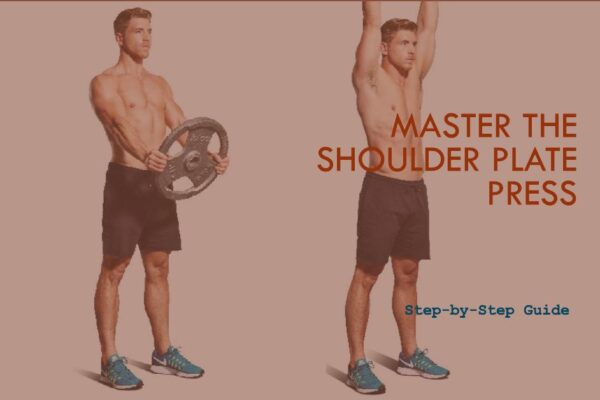
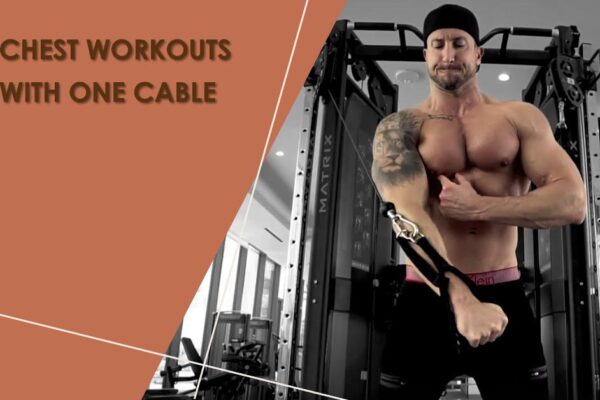
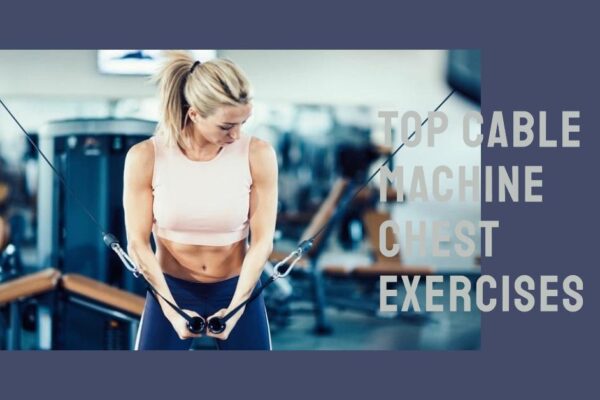
Leave a Reply